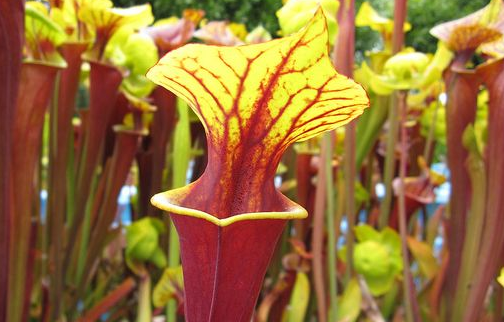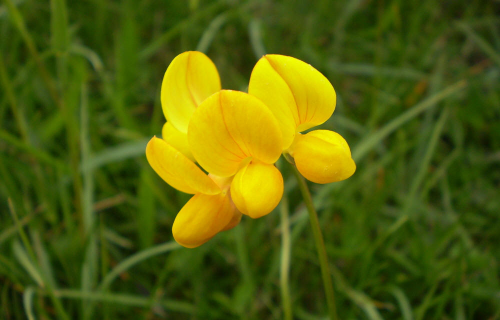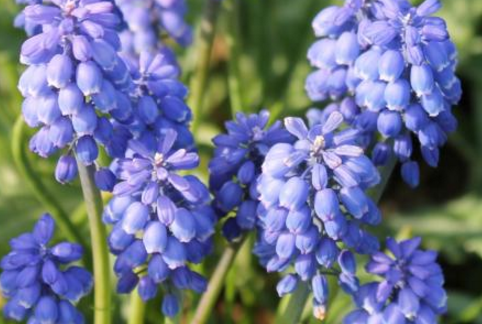How to raise bottle grass
Matrix
Bottle grass does not have very high requirements for the matrix, because its roots are very developed and will fill the bottom of the flowerpot. We can configure this matrix ourselves. Mix peat soil, water moss, perlite and other materials together, remember to put some broken tiles or bricks at the bottom of the basin, which is conducive to ventilation and drainage, and the soil should be slightly acidic.

Temperature
The most suitable growth temperature of bottle grass is between 20 ℃ and 32 ℃. It likes to be warm in winter and cool in summer. Because the temperature is too low in winter, the plant needs to enter the dormancy period. At this time, it should be moved into the room for maintenance, and the room temperature should not be lower than 5 ℃. In summer, because the temperature is too high and the light is fierce, we can't put the plant outside and let the sun shine directly on it. We should give it some shade and strengthen ventilation to cool it down.
Light
Bottle grass likes sunlight very much, and it needs more sunlight to maintain its normal growth during its growing period. if there is not enough light, the color of the plant will darken, which is not conducive to the growth of the plant. But in summer because the light is too strong, so the plant should be properly shaded, can not let the sun shine directly on it, otherwise it is likely to burn the leaves. The plant is dormant in winter, when the plant generally grows slowly or not, so reduce the amount of light given to it.
Watering
Bottle grass should be given enough water during the growing period, and the basin soil needs to be kept moist, so it is best to irrigate it with Rain Water. Water should be watered many times in summer, but the water temperature should not be too high, watering should be controlled in winter, and the soil can be slightly moist. Be careful when watering, do not pour water into the bug bottle, and there should be no stagnant water in the bottle.
Fertilizer application
Nitrogen fertilizer can be applied every half a month or so, and the roots can be irrigated with 0.2% Mel 0.3% fertilizer. But nitrogen fertilizer is not always used, and the red pitcher grass with leaves is best used with nitrogen, phosphorus and potassium. In winter, stop fertilizing.
Today, I introduced how to raise bottle grass. I hope it can be helpful for beginners to raise better bottle grass!
How to raise bottle grass
Substrate selection of pitcher grass
The requirement of bottle grass on the matrix is not high, because its root is very developed and generally occupies the whole flowerpot. It can be prepared with peat soil, water moss, perlite and other materials, and can be padded with some broken pots at the bottom of the basin, which is conducive to ventilation and light transmission. In terms of soil, barren acid soil is the best.
Temperature demand of bottle grass
Bottle grass likes to be warm in winter and cool in summer, and the best growth temperature is 20 ℃-32 ℃. It is better to enter the dormant period in winter, and the room temperature should not be lower than 5 ℃. Avoid high temperatures in summer, remember to provide proper shade, and strengthen ventilation to create a comfortable environment for it, and do not put it on the bald cement floor, which is most likely to be scalded after exposure.
Environmental humidity of bottle grass
Bottle grass is suitable to grow in a relatively humid environment, is not resistant to drying, and the air humidity should be kept above 30%. In the growing season, it is best to use the pot immersion method to plant, maintain the humidity of the substrate, and spray more water to the leaves in summer to keep the environment moist, and this is also conducive to cooling.
Lighting requirements of bottle grass
Bottle grass is sun-resistant, the growth needs sufficient light, the growth will be exuberant, the lack of light will be very monotonous. But pay attention to shade in summer to avoid direct sunlight, otherwise too strong sunlight may burn the leaves. Winter dormancy can reduce light, but it is important to be careful that bottle grass growing in dark conditions is not suddenly exposed to the sun, which is likely to lead to death due to inadaptation.
The watering problem of bottle grass
Bottle grass should be given enough water during the growing period, and the basin soil needs to be kept moist, so it is best to irrigate it with Rain Water. Water should be watered many times in summer, but the water temperature should not be too high, watering should be controlled in winter, and the soil can be slightly moist. Be careful when watering, do not pour water into the bug bottle, and there should be no stagnant water in the bottle.
Fertilization management of pitcher grass
In spring, nitrogen fertilizer can be applied every half a month, and the roots can be irrigated with 0.2% Mel 0.3% fertilizer. But it is not always a simple application of nitrogen fertilizer, the leaf red bottle grass had better be applied in combination with nitrogen, phosphorus and potassium. In winter, fertilizing will be stopped.
This is the question of how to raise bottle grass introduced by the editor. I hope everyone can cultivate healthy and brightly colored bottle grass.
Green bottle grass / mountain bottle sketch guide: how to raise green bottle grass / mountain bottle grass / how to propagate green bottle grass / mountain bottle grass Chinese scientific name: green bottle grass, mountain bottle grass Latin name: Sarracenia oreophila Origin: southern United States cultivation substrate: 1 part of peat can be used Add 1 portion of perlite or coarse sand mixed substrate survival temperature: 20-30 degrees suitable temperature: 0-38 degrees humidity: > 50% introduction: green bottle grass (scientific name: Sarracenia oreophila) is a relatively large, elegant insectivorous plant, leaves into a bottle-shaped erect, basal leaves, insecticidal leaves long tube-shaped, up to 75cm, yellowish green, with red veins. The shape is similar to the cage of pitcher plant, the insects induced by honey fall into the bottle, and the digestive juice in the bottle will digest and absorb the insects. Green bottle grass (scientific name: Sarracenia oreophila) is a relatively large, elegant insectivorous plant with bottle-shaped erect leaves, basal leaves, long barrel-shaped leaves up to 75cm, yellowish green and red veins. The shape is similar to the cage of pitcher plant, which can secrete honey and digestive juice. insects induced by honey fall into the bottle, and the digestive juice in the bottle will digest and absorb the insects. Born in a lowland swamp. Bottle grass has the habit of not afraid of cold, especially suitable for ordinary home cultivation without greenhouse or greenhouse, coupled with strong fecundity and easy management, it has become a widely popular pot insectivorous plant in Europe and the United States. Wild plants are native to the southern United States. English name: green bottle grass Latin name: Sarracenia oreophila alias: mountain bottle grass kingdom: plant boundary gate: angiosperm phylum: dicotyledonous plant outline: rhododendron family: bottle grass genus: English name: green pitcherplant1, morphological characteristics green bottle grass is perennial herb, rhizome creeping, with many fibrous roots Leaves basal into rosette-shaped leaves, long cylindrical leaves, up to 20-75 cm long, funnel-shaped, yellowish green with red veins, lid ovate, oblique above the opening, caliber 6 to 10 cm; sword-shaped leaves falcate, more than 50 cm long, growing in autumn The bottle-shaped leaf has an insect-catching sac, the opening of the capsule wall is smooth, and there are nectaries that secrete sweet honey to lure insects to come and fall into the sac. the capsule wall is smooth and contains digestive juice, which can secrete digestive enzymes to break down insects, and then absorbed by proteolytic enzymes broken down by glands composed of parenchyma cells in the inner wall. In addition, bottle grass grows sword-shaped leaves in autumn and winter, which have no insect sac and produce nutrients only through photosynthesis. Each leaf is curved at right angles, with a hood-like cover, bright green in color and similar in shape to the cage of pitcher plants that catch insects, with nectar glands inside, providing some honey food for insects. The bottle stem of green bottle grass is very long and narrow, so that the insects falling into the bottle bag slide further, and the insects are unable to fly out of the narrow tube. The stem and leaf of the bottle digest the soft part of the insect, but the hard shell part is retained. The flower is bisexual, and the inflorescence is a loose raceme drawn from the base of the leaves, which is composed of several large flowers. The core is composed of 1 helmet-shaped stigma, 3-celled ovary and 50-80 stamens. The flower is yellowish green and the calyx is 5, located below the petals. The fruit is a capsule containing a large number of small seeds, which automatically dehisces and pops up when it is ripe. Green bottle grass flowers open downward, petals light green yellow to green, round, unscented flowers, florescence from April to June. Seeds saccate, ca. 3 mm long, scabrous, surface articulate. 2. The distribution is distributed in northern Alabama, North Carolina and Georgia. 3. Conservation status is listed in the World Conservation Union (IUCN) ver 2.3: critically endangered species in 2000-extremely endangered (CR). 4. cultivation techniques require that the plants of the genus Cryptocarpus grow in open marshes, like sufficient light, wet soil, not afraid of cold and low air humidity, and are easy to cultivate insectivorous plants. Substrate: bottle grass is more suitable to be planted by basin soaking in the growing season, using a mixture of 1 part of peat and 1 part of perlite or coarse sand. The dormant period needs to be removed from the water plate to maintain a dry state to prevent rotting roots. You can also use a mixture of pure water moss, 2 parts of peat and 1 part of perlite or coarse sand. Moisture: using a water source with low mineral concentration, pot soaking is suitable for planting in the growing season to keep the substrate high humidity. Humidity: the air humidity requirement of bottle grass is not high, just keep it above 30%. Temperature: the suitable temperature for growth is 20-30 degrees. If the temperature is below 10 degrees, it will be dormant and can survive at 0-38 degrees. Lighting: bottle grass is a light-loving plant, can accept all-day sunlight, and the light can make the plant bright color, but in summer to avoid high temperature, can be appropriate shading. Nutrients: in the growing season, use general compound fertilizer and other diluted 4000 times to spray foliar or pour into bottle 1 to 3 heights, 1-2 times a month. Propagation method ramet: the bottle grass grows lateral buds, when it grows big enough, it is separated from the mother plant and cultivated alone. Cuttings: you can reproduce by cutting leaves or rhizome cuttings. The leaves can be cut half off from the mother plant and inserted obliquely on a clean substrate, or the rhizome can be cut into 2.5cm segments, the incision is smeared with fungicides and placed flat on the clean substrate, and then covered with wet water moss to maintain high humidity and bright light, buds can grow in about 2 months. Sowing: the seed preservation period of bottle grass is longer, which can be up to 3-5 years, but the germination time is also longer, which takes 2-4 months. Before sowing, keep the seeds in cold storage (about 5 degrees) for 1-2 months, and keep the seeds moist. They can be wrapped in wet napkins or placed in wet water moss. In order to avoid mildew, water moss and seeds should be sterilized. And check regularly (or sow seeds at low temperatures in winter or spring without cold storage) Sowing at a suitable temperature of 15-30 degrees after cold storage, the seeds are sown directly on the surface of a clean substrate, uncovered with soil or covered with fine peat or fine-grained red jade soil 1-3 mm high to help fix the root system, maintain high humidity and bright light, germinate in about 1 month (and in rare cases a few months or even a year later), and the seeds take 3-5 years to grow into adults. 5. the bottle-shaped leaves of green bottle grass are effective insect traps. The saccular bottle-shaped leaves have bright colors, and their openings often secrete sweet honey to lure insects to come to eat. Once the deceived insects climb to the top, and try to climb across the mouth of the bottle into the inner wall, it is slipped into the bottle because the inner wall is very slippery and falls into the digestive juice in the bottle, trying to climb out of the bottle. He was blocked by the barbed hairs of the inner wall, and finally fell back into the digestive juice and drowned because he struggled powerless. The digestive juice of bottle grass contains proteolytic enzymes secreted by the glands of the bottle wall, which can dissolve the protein of drowned insect corpses and turn them into nutrients and amino acids are absorbed by the bottle wall.
- Prev

How to raise the root of a hundred pulse
Light hundred pulse root likes sunlight very much, it is not tolerant to shade, like warm and humid climate, in its growth period, should give the plant sufficient light, so that it can accumulate enough nutrients to blossom, if the light is not enough, the number of flowers will be very small, and the plant will lie down and grow.
- Next

Culture method of grape hyacinth
1. Soil grape hyacinth has strong adaptability, is easy to cultivate, and prefers loose, fertile and well-drained rotten leaf soil. two。 Water grape hyacinth cultivation to keep the basin soil moist, in case of drought should be timely watering, after the flowers should stop watering. 3. Light grape hyacinth likes sunshine and can withstand semi-overcast.
Related
- Fuxing push coffee new agricultural production and marketing class: lack of small-scale processing plants
- Jujube rice field leisure farm deep ploughing Yilan for five years to create a space for organic food and play
- Nongyu Farm-A trial of organic papaya for brave women with advanced technology
- Four points for attention in the prevention and control of diseases and insect pests of edible fungi
- How to add nutrient solution to Edible Fungi
- Is there any good way to control edible fungus mites?
- Open Inoculation Technology of Edible Fungi
- Is there any clever way to use fertilizer for edible fungus in winter?
- What agents are used to kill the pathogens of edible fungi in the mushroom shed?
- Rapid drying of Edible Fungi

